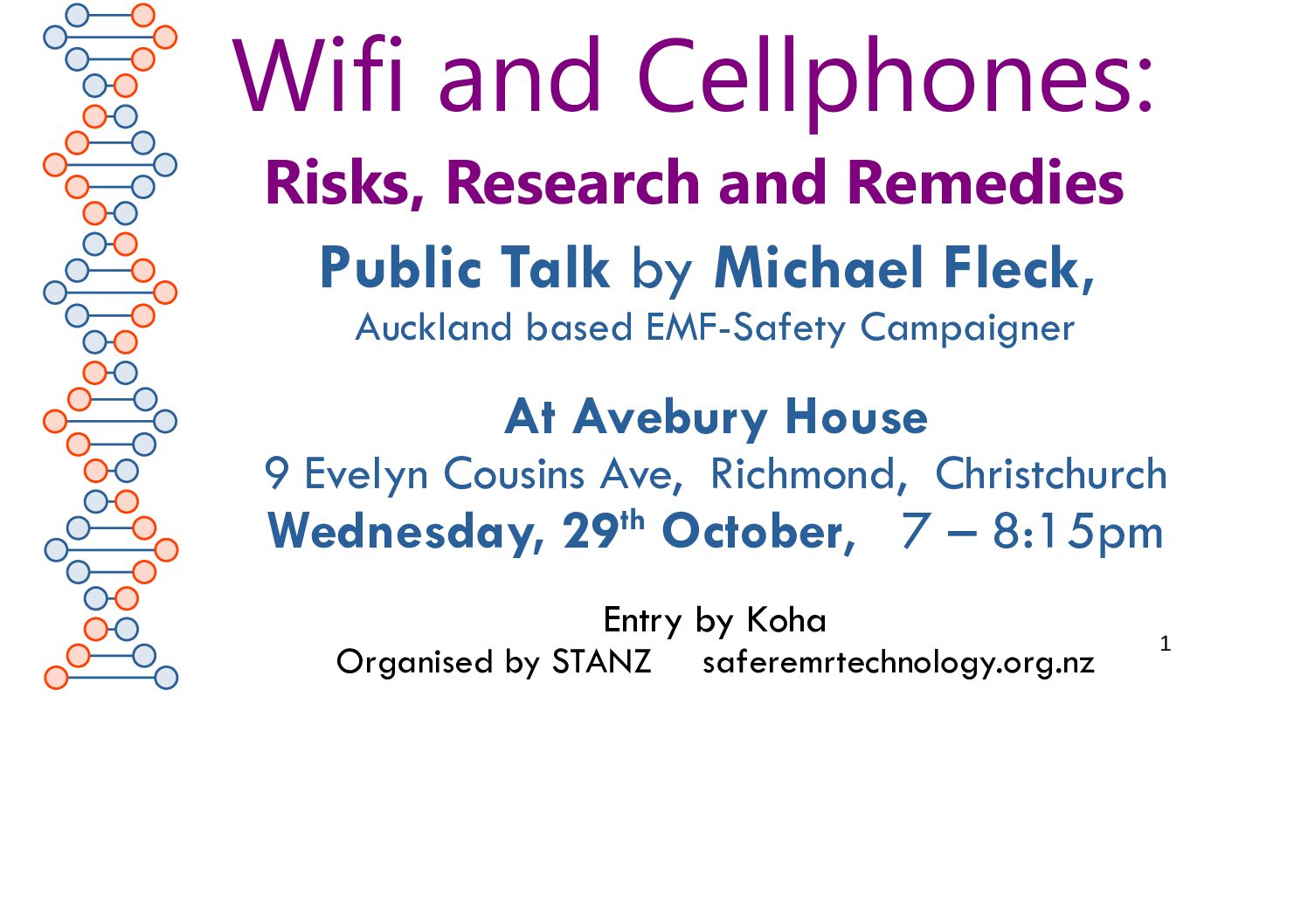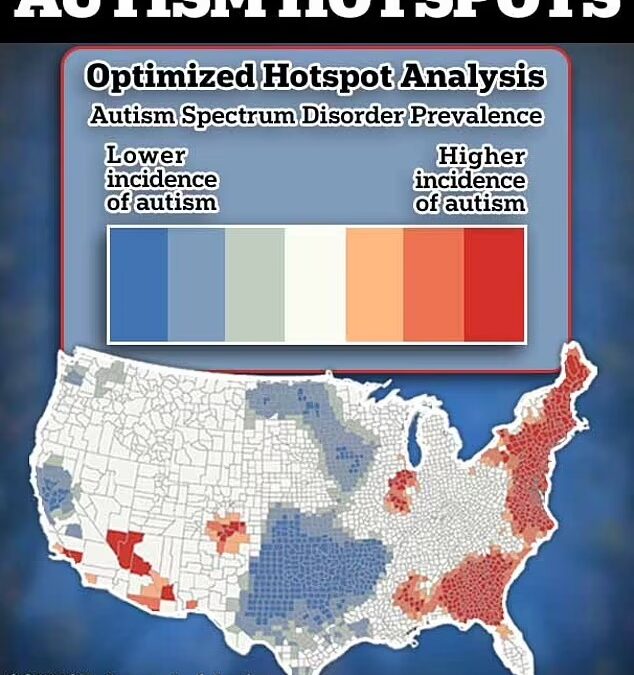The International Commission on the Biological Effects of Electromagnetic Fields (ICBE-EMF) today announced the online publication of its latest paper, “The WHO-Commissioned Systematic Reviews on Health Effects of Radiofrequency Radiation Provide No Assurance of Safety,” in the journal Environmental Health. The paper critically examines the World Health Organization (WHO)-commissioned systematic reviews on the health effects of radiofrequency (RF) radiation, identifying significant flaws that undermine their conclusions regarding safety.
RF radiation, a type of non-ionizing electromagnetic field (EMF), is emitted by ubiquitous wireless devices and telecommunications infrastructure, including cell phones, Wi-Fi routers, cell towers, and building-mounted antennas. While acknowledging the importance of the WHO’s objective to evaluate the literature on RF radiation and adverse health effects, the ICBE-EMF paper asserts that methodological weaknesses and potential biases compromise the reliability of the published reviews.
Dr. John Frank, a physician and epidemiologist at the University of Edinburgh, Professor Emeritus, University of Toronto, and ICBE-EMF Chairperson, stated, “We at ICBE-EMF find, based on our substantial, collective, multidisciplinary expertise in this field, that the WHO-commissioned systematic reviews are simply inadequate to conclude that wireless radiation is safe or that ICNIRP/FCC limits are reliable. Presenting these flawed reviews as evidence of safety for ICNIRP and the FCC’s current exposure limits would mislead the public.”
The ICBE-EMF will be holding a press conference on October 7, 2025, at 9:00 AM Pacific to present their findings detailed in the publication.
Concerns Over Bias and Flawed Methodology
A central concern highlighted in the ICBE-EMF paper is the extensive involvement of individuals affiliated with the International Commission on Non-Ionizing Radiation Protection (ICNIRP) in the production of these WHO-commissioned reviews. ICNIRP and the WHO’s EMF Program share a common origin and have historically maintained that thermal effects are the only established health risks of RF radiation exposure. Given that ICNIRP’s recommended RF radiation exposure limits have been adopted by most countries for the past 30 years, the ICBE-EMF is raising questions regarding potential bias in these reviews and the adequacy of current exposure limits for protecting public health.
Dr. Ron Melnick, past Chair of the ICBE-EMF, now Senior Advisor and former senior toxicologist at the National Toxicology Program and the National Institute of Environmental Health Sciences (NIEHS), elaborated on their findings. “We began reviewing the WHO-commissioned assessments because of our longstanding involvement in this research and the potential influence these reviews could have on future policy decisions,” said Dr. Melnick. “We uncovered numerous flaws, including the exclusion of relevant studies, reliance on weak studies, inappropriate combining of studies with vastly different exposure conditions, and undisclosed biases among the authors.”
Evidence of Harm and Need for Stronger Protections
The ICBE-EMF paper specifically notes that the WHO-commissioned systematic reviews on cancer and reproductive effects in experimental animals indicated a high certainty of association between RF radiation exposure and increased incidences of heart schwannomas and reduced male fertility. Furthermore, these reviews provided quantitative data that, according to the ICBE-EMF, could and should be used to reduce exposure limits and improve protection for humans.
Dr. Joel Moskowitz, Director of the Center for Family and Community Health at the University of California, Berkeley, further emphasized the analytical weaknesses. “Eleven of the twelve WHO-sponsored systematic reviews relied upon multiple quantitative analyses (meta-analyses) of primary studies on RF radiation health effects. In most instances, we found that these analyses had serious methodological weaknesses that undermined interpretation of the results and invalidated the authors’ conclusions, which were based upon these results,” stated Dr. Moskowitz.
The ICBE-EMF has previously published work demonstrating how scientific evidence over the past three decades invalidates many assumptions underlying ICNIRP’s RF radiation exposure limits. With mounting scientific evidence and widespread, increasing population exposure to RF radiation, the ICBE-EMF stresses the urgent need to reduce exposures and strengthen safety limits, particularly for vulnerable populations such as pregnant individuals, children, and those with chronic health conditions, including electromagnetic hypersensitivity.
The ICBE-EMF concludes that the WHO-commissioned systematic reviews do not provide proof of safety for cell phones or other wireless communication devices, nor do they justify the RF radiation exposure limits currently specified in ICNIRP’s guidelines. The organization calls for urgently needed, science-based public health guidelines that are genuinely protective of human health and the environment.
PRESS CONFERENCE
Wireless Radiation and Public Health: What the WHO Reviews Reveal—and Don’t
Scientists Challenge WHO-Commissioned Reviews on Wireless Radiation Safety
Date: October 7, 2025
Time: 9:00 AM Pacific Time (PT)
Zoom Press Conference:Registration Link:
Featured Speakers
· Dr. John Frank: ICBE-EMF Chairperson; physician and epidemiologist, University of Edinburgh; Professor Emeritus, University of Toronto
· Dr. Ron Melnick: Past Chair, ICBE-EMF; Senior Advisor; former Senior Toxicologist, National Toxicology Program (NTP), NIEHS
· Dr. Erica Mallery-Blythe, BM (UK Medical Degree) : ICBE-EMF Special Expert; physician; founder, Physicians’ Health Initiative for Radiation and Environment
· Dr. Joel Moskowitz: ICBE-EMF Commissioner; Director, Center for Family and Community Health, University of California, Berkeley
· Elizabeth Kelley, MA: ICBE-EMF Managing Director; President of the Board, Electromagnetic Safety Alliance
About the International Commission on the Biological Effects of Electromagnetic Fields (ICBE-EMF):
ICBE-EMF is an international consortium of scientists, doctors, and researchers with expertise and peer-reviewed publications on the biological and health effects of electromagnetic fields, including wireless RF radiation. Wireless devices such as cell phones, cordless phones, Wi-Fi, and cell towers emit radiofrequency (RF) radiation. The Commission is committed to upholding the highest standards of scientific research and makes science-based recommendations to ensure the protection of the public and the environment. ICBE-EMF.org
Join the ICBE-EMF mailing list to stay updated with our latest scientific publications and news.
—
The WHO-commissioned systematic reviews on health effects of radiofrequency radiation provide no assurance of safety
Melnick RL, Moskowitz JM, Héroux P, Mallery-Blythe E, McCredden JE, Herbert M, Hardell L, Phillips A, Belpoggi F, Frank JW, Scarato T, Kelley E, on behalf of the International Commission on the Biological Effects of Electromagnetic Fields (ICBE-EMF). The WHO-commissioned systematic reviews on health effects of radiofrequency radiation provide no assurance of safety. Environ Health 24, 70 (2025). https://doi.org/10.1186/s12940-025-01220-4.
Abstract
The World Health Organization (WHO) commissioned 12 systematic reviews (SR) and meta-analyses (MA) on health effects of exposure to radiofrequency electromagnetic fields (RF-EMF). The health outcomes selected for those reviews (cancer, electromagnetic hypersensitivity, cognitive impairment, birth outcomes, male fertility, oxidative stress, and heat-related effects) were based on a WHO-conducted international survey. The SR of the studies of cancer in laboratory animal studies was the only one that did not include a MA, because those authors considered it inappropriate due to methodological differences among the available studies, including differences in exposure characteristics (carrier frequency, modulation, polarization), experimental parameters (hours/day of exposure, duration of exposure, exposure systems), and different biological models. MAs in all the other SRs suffered from relatively few primary studies available for each MA (sometimes due to excessive subgrouping), exclusion of relevant studies, weaknesses in many of the included primary studies, lack of a framework for analyzing complex processes such as those involved in cognitive functions, and/or high between-study heterogeneity. Due to serious methodological flaws and weaknesses in the conduct of the reviews and MAs on health effects of RF-EMF exposure, the WHO-commissioned SRs cannot be used as proof of safety of cell phones and other wireless communication devices. However, the animal cancer SR, which was rated as “high certainty of evidence” for heart schwannomas and “moderate certainty of evidence” for brain gliomas, provided quantitative information that could be used to set exposure limits based on reducing cancer risk. The multiple and significant dose-related adverse effects found in the SRs on male fertility and pregnancy and birth outcome should also serve as the basis for policy decisions to lower exposure limits and reduce human reproductive risks. The report of harmful effects (e.g., cancer, reproductive toxicity, etc.) at doses below the adverse health effect threshold claimed by ICNIRP demonstrates that current exposure limits to RF-EMF, which were established by applying arbitrary uncertainty factors to their putative adverse threshold dose, lack scientific credibility.
Open access: https://ehjournal.biomedcentral.com/articles/10.1186/s12940-025-01220-4
Supplementary Material 1. “Examples of Working Group Authors’ Ties to Industry”
Supplementary Material 2. “The Meta-Analyses in the WHO RF-EMF Systematic Reviews Yielded Unreliable Results”
https://www.saferemr.com/2022/10/international-commission-on-biological.html


